We wish to share with you the following article from Prachatai website, written by Thaweeporn Kunmetha.
In October 2003, Jawa Jalo, an ethnic Lahu, was captured by armed state officials during a search of a litchi farm in a northern border province. Although the officials who captured him reported to their commanders that no illicit drugs were found on Jawa, they still decided to take him into custody at a ranger camp. An official trod on his neck until his tongue protruded and blood flowed from his mouth. At the camp, he was beaten up. Other detainees, most of them ethnic Lahu, were twice forced to kick him. Jawa was seriously injured and left on the floor to die. The officials dumped his body into a hole in the ground. They shot him several times to make sure that he was dead. Two detainees were ordered to bury the body. A few days later, Jawa’s daughter twice went to the ranger camp asking for her father. The first time, the officials said they had already released him and did not know where he had gone. The second time, an official told her that her father had been taken to Chiang Mai.
Jawa Jalo is still disappeared.
According to Lahu Association President Sila Jahae, more than 20 Lahu have suffered enforced disappearance at the hands of army rangers and police officers.
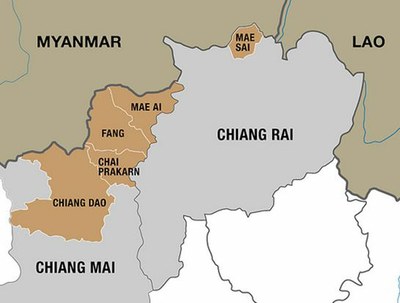 Around120,000-150,000 people of Lahu ethnic live in Mae Ai, Fang, Chai Prakarn and Chiang Dao districts in Chiang Mai and Mae Sai district in Chiang Rai. About 90 per cent of the population have Thai citizenship.
Around120,000-150,000 people of Lahu ethnic live in Mae Ai, Fang, Chai Prakarn and Chiang Dao districts in Chiang Mai and Mae Sai district in Chiang Rai. About 90 per cent of the population have Thai citizenship.
The Lahu people, mostly living in districts bordering Myanmar in Chiang Rai and Chiang Mai provinces, have been living in a climate of fear since the Thaksin Shinawatra administration announced the War on Drug policy in 2003.
State authorities believe that the border districts are part of a drug trafficking route from Wa State in Myanmar and that some hill tribe people are involved.
The War on Drugs intensified the unfair treatment of the Lahu based on stereotypical assumptions made by state authorities that hill tribes people are involved in crimes such as drug trafficking, deforestation and land encroachment.
During this period, state officials, mostly soldiers and rangers, arbitrarily arrested individuals, claiming they may have been involved in drug trafficking or possession of illegal goods. Upon arrest, the villagers were usually beaten and blindfolded. Arriving at the army camp, they would be interrogated and beaten again. They were detained in a hole in the ground, about 2-3 metres wide and 4 metre deep. Each hole contained about 10 detainees, but sometimes the number may reach 40.
Most of the detainees were kept in the hole for seven days continuously before they were temporarily brought up for interrogation and torture, including electric shocks. They were fed twice a day. The average detention period was two to three months, though a few were detained for only 45 days.
“The condition in the hole is so terrible. We eat, sleep, piss and shit in the same hole,” said Sila.
Sila Jahae, President of Lahu Association
Stories of the hole and torture are widely known among Lahu villagers. In many cases, at the time of capture, shooting and beating are done in public, in front of other Lahu. Most of the victims and victims’ families do not dare to report the case to the police as they are afraid that they themselves will be disappeared.
“It’s a custom of state officials to capture a villager and beat them in front of other villagers,” the President of Lahu Association told Prachatai.
Sila is a vocal Lahu activist who has fought for justice for the Lahu and other hill tribes in Thailand. He himself was detained in a hole in a ranger camp twice. First time, when he bumped into a group of rangers on his way back home from police station. Second time, the soldiers came to detain him while he was in a meeting with Lahu Association members. He was luckier than other Lahu. He was released unharmed after his wife complained to a local MP.
After the War on Drugs was concluded at the end of 2003, the practice of torture, extrajudicial killings and enforced disappearances has continued until today. State officials may arrive at the door, claiming to search for illegal goods and order a search without a court warrant, or a fake warrant, taking valuables and vehicles from the house and detaining the person at an unknown, unofficial place.
Today the practice has created a new problem when some local Lahu who are running for a local political office accuse their rivals of involvement in drug trafficking or possessing illegal goods. Some Lahu villagers have decided to flee into the forest or to Myanmar. Some have joined militant groups as they want to escape the atrocities committed by the Thai state, according to Sila.
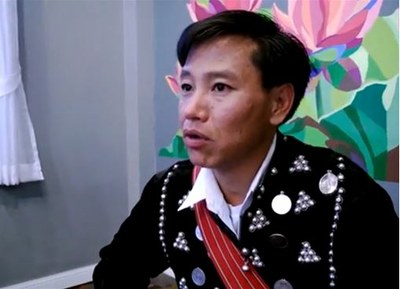 Sila said no state officials have ever been held to account for the crimes against the Lahu.
Sila said no state officials have ever been held to account for the crimes against the Lahu.
About 1800 kilometres to the South, in the restive border province of Yala, after a secondary school in Bannang Sata District had been targeted by arsonists eight times, the local task force picked on the school’s janitor, Mayateng Maranor. On the morning of 24 June 2007, about 50 army rangers from Special Task Force 41 cordoned off the village and set up a checkpoint in front of his house. At around noon, the rangers searched Mayateng’s house and questioned him about why he had let the school burn down. They also questioned him about the whereabouts of his teenage son. Mayateng denied all allegations and was arrested without a warrant under martial law. Many of his personal items, including his pickup truck, were also taken.
The stories of Mayateng and Jawa are among about 70 cases of enforced disappearance and torture documented by the Justice for Peace Foundation (JPF), Bangkok-based NGOs which works extensively on the issue of enforced disappearance, torture and extrajudicial killings.
30 cases are related to anti-separatist policies in the three southern border provinces of Yala, Pattani, Narathiwat and four districts of Songkhla. Annexed to Siam in 1909, the area’s inhabitants are predominantly Muslim Malay, most of whom are not proficient in Thai.

Around 30 cases of enforced disappearance documented by the Justice for Peace Foundation are related to anti-separatist policies in the three southern border provinces of Yala, Pattani, Narathiwat and four districts of Songkhla.
The region has a history of resistance. The situation deteriorated after Thaksin dissolved a special state agency in charge of security in the Deep South and replaced it with the highly unpopular police force in 2002.
The Thai state’s response to insurgency in the Deep South under all subsequent governments has been highly militarized including the deployment of large numbers of troops and the imposition of special security laws, such as the state of emergency, according to a JPF report, Enforced Disappearance in Thailand, published in June 2013. “This approach, combined with insurgent violence and intimidation, has resulted in a civilian population characterized by fear and plagued with human rights violations. Arbitrary detention, torture, extrajudicial killings and disappearances have all become common experiences in the south,”
Policies that lead to state violence
Interestingly, the policies that have led to serious human right violations were created by a popular leader elected by the majority. The serious human rights violations committed under Thaksin’s administration even seem to be forgotten when the country is overwhelmed by color-coded political conflict.
What are the characteristics of a policy that usually leads to serious human rights violations, such as torture, extrajudicial killings and enforced disappearances? Tyrell Haberkorn, an expert on violence and human rights violations in Thailand from the Australian National University, says policies that usually lead to such violations are ones that create grey areas for the state officials.
“In case of the War on Drugs, the policy was just vague enough for the state officials and gave a wide range of space. They were told to ‘deal with the drugs problem’ but Thaksin or people under Thaksin never said how they should deal with it. That was taken as a signal as to do whatever you need to do,” said Haberkorn.
The policy given to the local law enforcers is ‘an eye for an eye,’ meaning that those with a history of involvement with drugs are considered ‘security threats’ that could be dealt with in a decisive, ruthless and severe manner. Each province was also given a quota for arrests and seizures of narcotic drugs. Police and local officials who failed to meet the quota were punished.
In the case of the restive south, Haberkorn said, the grey area comes from the special security laws in force in the region, which basically allow a period of detention without charge from seven to thirty days. They also allow detainees to be held in a non-official place, such as a military camp or a temple. The families of detainees do not know where they have been taken and do not know where to ask about them. Lawyers also do not have to be given access. The detainees basically are not given access to anyone.
Systematized crime of the state
The best-known case of enforced disappearance is that of the Muslim human rights lawyer Somchai Neelapaijit. 12 March 2014 marked the 10th anniversary of his disappearance which took place during the Thaksin administration.
10 years ago, Somchai was representing Muslim suspects who were accused of stealing weapons from an army camp in Narathiwat on 26 January 2004. He later found out that his clients had been tortured and forced to confess while in the hands of the Crime Suppression Division (CSD). The allegations of torture included beatings, kicking, electric shocks and urination into the mouth. Somchai exposed the torture allegations by CSD police on the following day at a panel discussion in Bangkok which was attended by a high ranking official in the government and journalists. Somchai later submitted a petition alleging abuse to several state agencies.
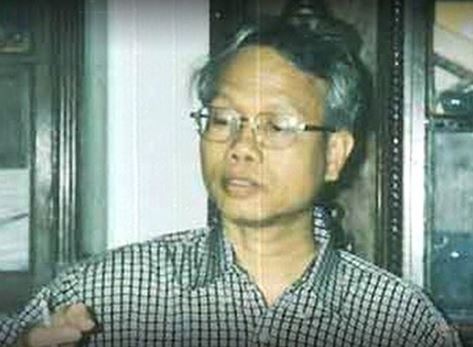 Somchai Neelapaijit who was last seen on 12 March 2004
Somchai Neelapaijit who was last seen on 12 March 2004
On 12 March 2004, while Somchai was driving his car on Ramkhamhaeng Road at around 8.30 pm, a car behind him forced him to stop. A witness saw Somchai talking with five men who then forced him into their car. Somchai has never been seen since.
Five police officers were accused of robbery and coercion. Pol. Maj. Ngern Thongsukand, was identified by the witness as the person who pushed Somchai into the car. Ngern was one of the team investigating the weapons robbery case and was identified as an abuser of the Muslim suspects in the torture case.
Pratubjit Neelapaijit, daughter of Somchai and researcher of JPF, once said in a TV program that she believes there are actually 20 state officials involved in the crime.
Some of the most compelling pieces of evidence are the mobile phone records of the five defendants. On 12 March 2004, the day that Somchai disappeared, there were 75 phone calls between the five police officers, which was very unusual in comparison with the record of calls on the days before and after 12 March, which show very few contacts among the group. The phone records also show that the group had followed Somchai since the morning until his disappearance. Interestingly, the records show that one of the defendants also called a person at the Prime Minister’s Office after the incident on Ramkhamhaeng Road.
The Court of First Instance in January 2006 found only Ngern guilty of coercion, which is a relatively minor offence. He was released on bail. On the same day, then Prime Minister Thaksin Shinawatra spoke to the media, saying that he knew that Somchai was dead and that state officials caused his death.
In September 2008, Ngern went missing.
In December 2009, Abdulloh Abukaree, one of the witnesses and one of Somchai’s clients in the torture case, also disappeared.
The Appeal Court in March 2011 acquitted all the defendants due to insufficient evidence. It also ruled that Somchai’s wife, Angkhana Neelapaijit, could not act on her husband’s behalf as joint plaintiff, reasoning that it could not be confirmed that Somchai had been murdered or injured to the extent that he could not act by himself.
In other words, the Appeal Court required to see the body of a victim of enforced disappearance before ruling that he was dead.
Thailand has not yet criminalized enforced disappearance. This means the current law only recognizes a murder case when there is a dead body.
The Department of Special Investigation (DSI), which is responsible for investigating the case, has been harshly criticized by Somchai’s family and the International Commission of Jurists (ICJ) for lacking the political motivation to adequately prepare experts and evidence as can be seen from several loopholes in the evidence, resulting in the court’s rejection of the evidence. The ICJ also urged the DSI to file murder charges against the defendants.
In December last year, the DSI claimed that because they lost the Somchai case file when anti-government protesters rallied at the DSI headquarters, it could not continue investigation of the case. The claim later turned out to be untrue.
A DSI officer has told Angkhana that Somchai was tortured to the death at a place near the CSD office. The body was burned and the ashes were scattered in the Maeklong River. Although the DSI seems to know the fate of Somchai, the DSI later announced in December that it is considering closing the case.
The case of Somchai’s disappearance, Haberkorn said, is a vivid example of how enforced disappearance in Thailand has become systematized in that the crime was carried out with collusion at every level. Moreover, within the chain of command, no one criticized the police who carried out the crime. And also it has become systematized because no one was held accountable.
According to Angkhana, the police officers involved in the case were briefly suspended from duty during the Abhisit Vejjajiva government, but they have been reinstated and even promoted during the current Yingluck Shinawatra government.
“State officials received the signal that this is something they can do. Certainly, they won’t be penalized and it is true that they may be rewarded,” said Haberkorn.
Culture of Impunity; culture of enforced disappearance
The most shaming failure of the nation to prosecute state authorities for committing serious human rights violation was the mass disappearance, torture and killings of communist suspects in the southern province of Phatthalung during the Cold War, nicknamed the “Red Drum” killings. The incidents took place under the anti-communist dictatorship of Field Marshal Thanom Kittikachorn.
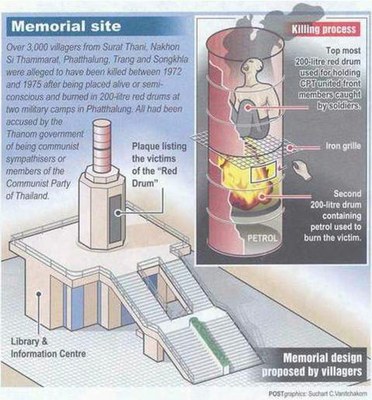 Image on the right shows the methong of killing that a communist suspect would be pushed in ‘red drums.’ Image on the left shows the memorial of Red Drums Killing. Photo courtesy of the Bangkok Post, which was published in October 2003.
Image on the right shows the methong of killing that a communist suspect would be pushed in ‘red drums.’ Image on the left shows the memorial of Red Drums Killing. Photo courtesy of the Bangkok Post, which was published in October 2003.
The name derives from the method of killing communist suspects. Thousands of communist suspects are believed to have been killed by being burned alive in 200-litre oil drums. While the bodies were burning, truck engines were revved to partially mask the screams of those who were being murdered. It is estimated that about 3,000 people were killed in this manner around 1972, according to Haberkorn’s research ‘Getting Away With Murder in THAILAND: State Violence and Impunity in Phatthalung.’
Even though the atrocities were committed under a military dictatorship, the exposure of such crimes was made possible by student activists, during a brief period of democracy in 1975, two years after the 14 October 1973 uprising.
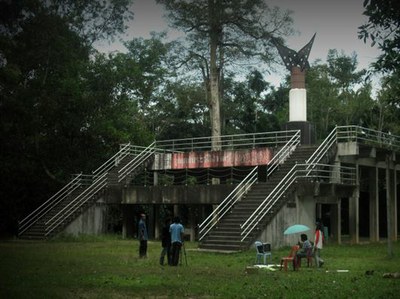 The Red Drums Memorial site in Srinakarin district, phattalung province. Photo Courtesy of Mekong Travelers blog.
The Red Drums Memorial site in Srinakarin district, phattalung province. Photo Courtesy of Mekong Travelers blog.
The exposure stirred hot debate in Thai society. The media widely reported the Red Drums case and the public urged the civilian government to punish the wrongdoers. The Interior Ministry then set up a committee in mid-1975 to investigate the case. About a month later, the then Interior Minister concluded that innocent citizens had been killed, but only seventy or eighty people were involved, rather than thousands. Regardless of the number, no one was punished. And the state agency responsible for the killing continued their work as usual, Haberkorn writes in her research.
“[Impunity and enforced disappearance] are directly related. I am routinely astounded because there have been so many cases of disappearance, torture and extrajudicial killings, a massacre,” said the academic. “But it’s extremely rare that anyone was held to account.”
Since no one was held accountable, the practice of enforced disappearance and extrajudicial killings happens over and over, has become normalized and even flourishes in a culture of impunity, she added.